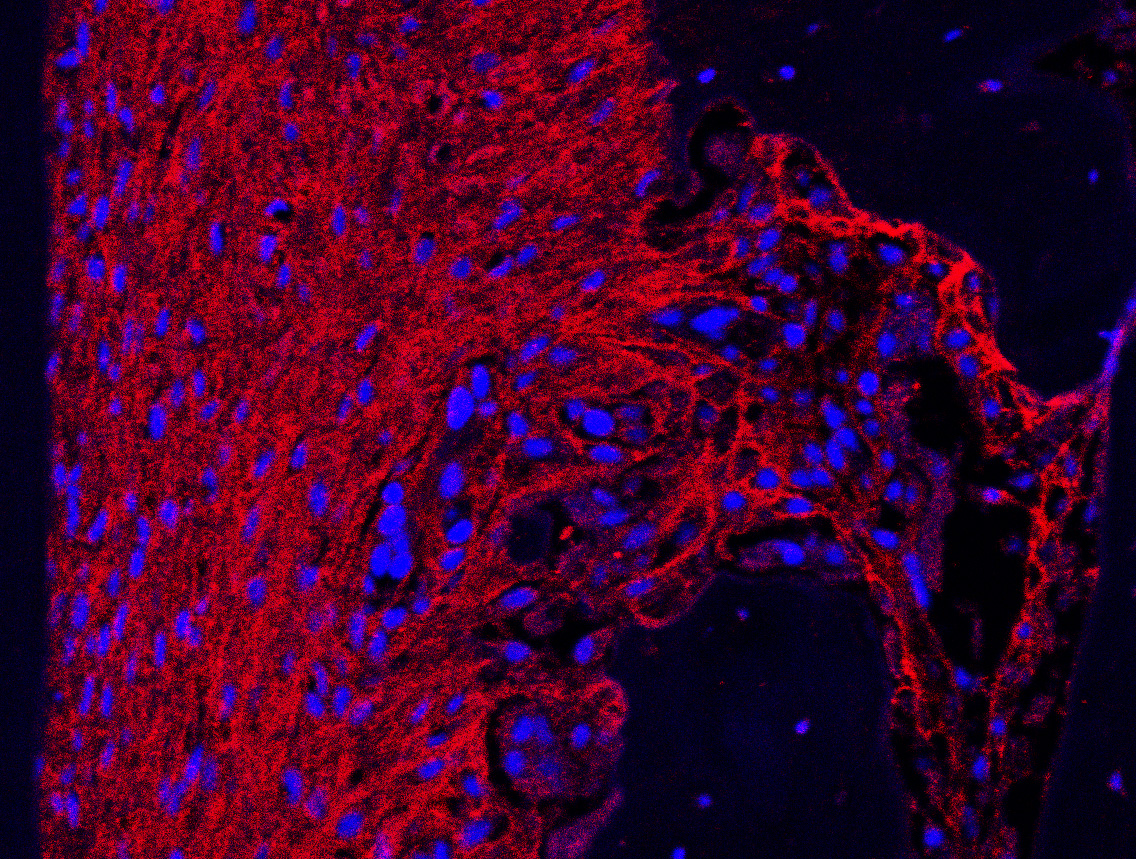
New research has shed light on the science behind the formation of the periodontal ligament, which helps keep the tooth stable in the jawbone.
Research published in the Journal of Dental Research has improved the understanding will also help scientists work towards regenerating the tissues that support teeth.
Our teeth take thousands of bites per day, and understanding exactly what holds them in place and how is key to helping people live with their own teeth for longer.
A signalling pathway
The study, led by the Universities of Plymouth and Geneva, shows how a ‘signalling pathway called Notch’, which is known to be activated in stem cells and cancer, is important for periodontal ligament development.
A signalling pathway describes how a group of molecules in a cell work together to control one or more cell functions, such as cell division or cell death.
After the first molecule in a pathway receives a signal, it activates another molecule. This process is repeated until the last molecule is activated and the cell function is carried out.
Abnormal activation or inhibition of certain signalling pathways can lead to cancer and other conditions, including problems with tissue regeneration.
A key finding in the new study, is that Lamin A, a cell nuclear protein, is a direct target of Notch pathway.
Lamin A is best known for its mutated form progerin, which causes fatal ‘early ageing’ disease, Progeria syndrome – but by uncovering its involvement in periodontal ligament formation, scientists have better insight into how molecules function during tissue regeneration, and how the process could be affected during disease.
Understanding tissue regeneration and repair
Corresponding author Dr Bing Hu, associate professor of oral and dental health research in Peninsula Dental School at the University of Plymouth, explains: ‘The periodontal ligament starts to properly hold the tooth in the jawbone when a tooth breaks out and becomes functional.
‘Understanding the mechanisms of how periodontal ligaments develop and the molecules that assist the tissue becoming mature is really important for our understanding of tissue regeneration and repair.
‘The next steps are for us to see if and how the molecules we have identified in this study can be translated into a human-only model and, in turn, how they are affected in both healthy and diseased conditions.’
This research is a part of the MD-PhD thesis of Dr Balázs Dénes of the University of Geneva.
Dr Dénes said: ‘We believe that our findings are an important stepping stone to better dental treatments in situations involving the periodontal ligament, such as gum disease (periodontitis), tooth restoration by dental implants or orthodontic tooth movement.’
The full study, entitled Notch coordinates periodontal ligament maturation through regulating Lamin A, is now available to view in the Journal of Dental Research (doi: 10.1177/0022034519871448).
This study was supported by the Swiss National Science Foundation; the European Union Marie Skłodowska-Curie Actions; the European Regional Development Fund and the Biotechnology and Biological Sciences Research Council (BBSRC).
Link


